

You Got a Tree!
If you recently adopted a tree from one of our distribution events, we’re so glad you did! You’re likely getting a 5-gallon tree, which usually means it’s between 2-3 years old. We’ve gathered all our resources and tips on how to plant your tree and the best ways to take care of it.
How to Plant Your Tree in the Ground
Step 1: Pick the right spot
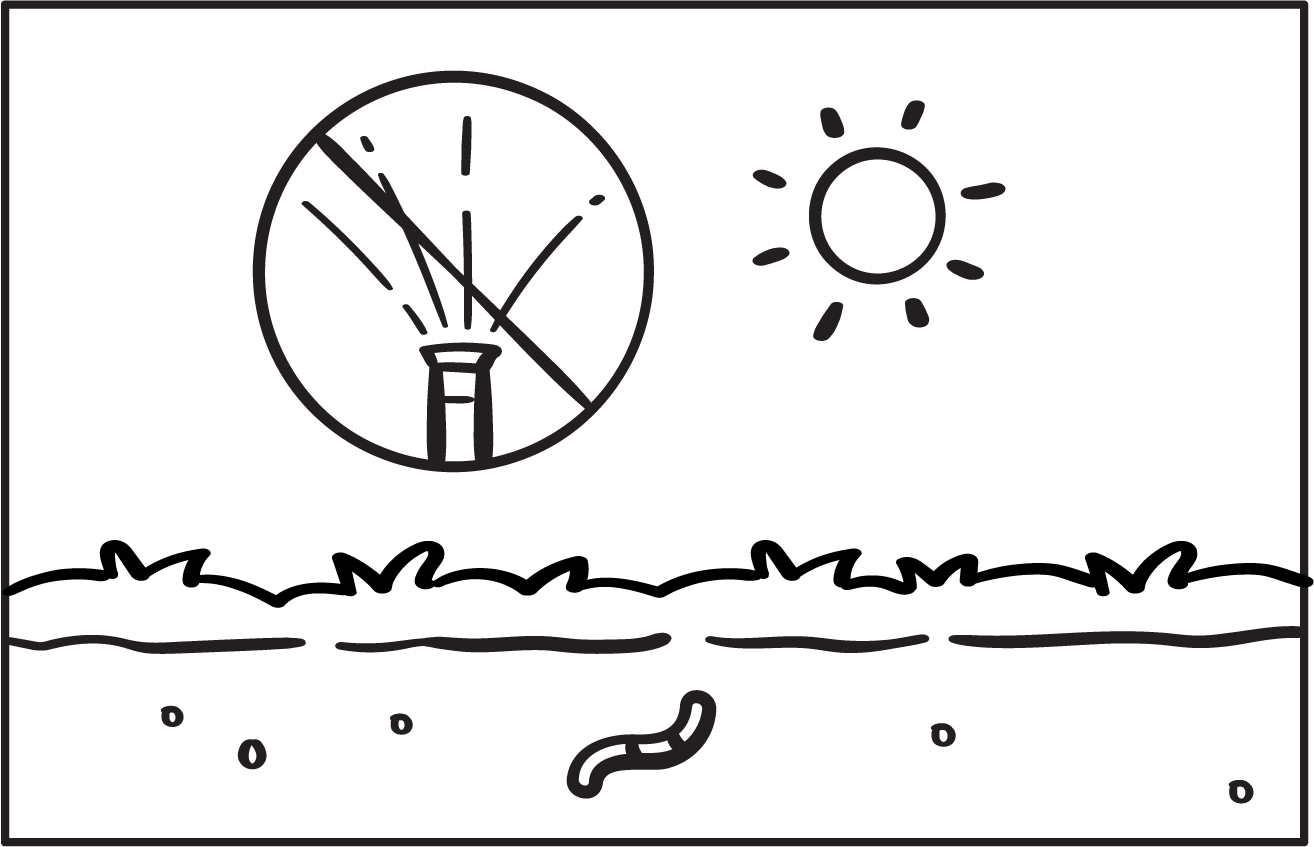
When selecting a spot for your new tree, you should look for an area with well-draining soil, away from any lawn sprinklers, as constant moisture on the bark and leaves can lead to disease and rot.
Make sure you find a spot where your tree will receive sufficient sun. Most of the trees TreePeople distributes are fine with either full sun or partial shade. However, if the spot is too shady, it may stunt your tree’s growth or result in the development of mold or mildew.
To check if there are utility lines below the spot you’ve chosen, please call 811.
Step 2: Clear the area
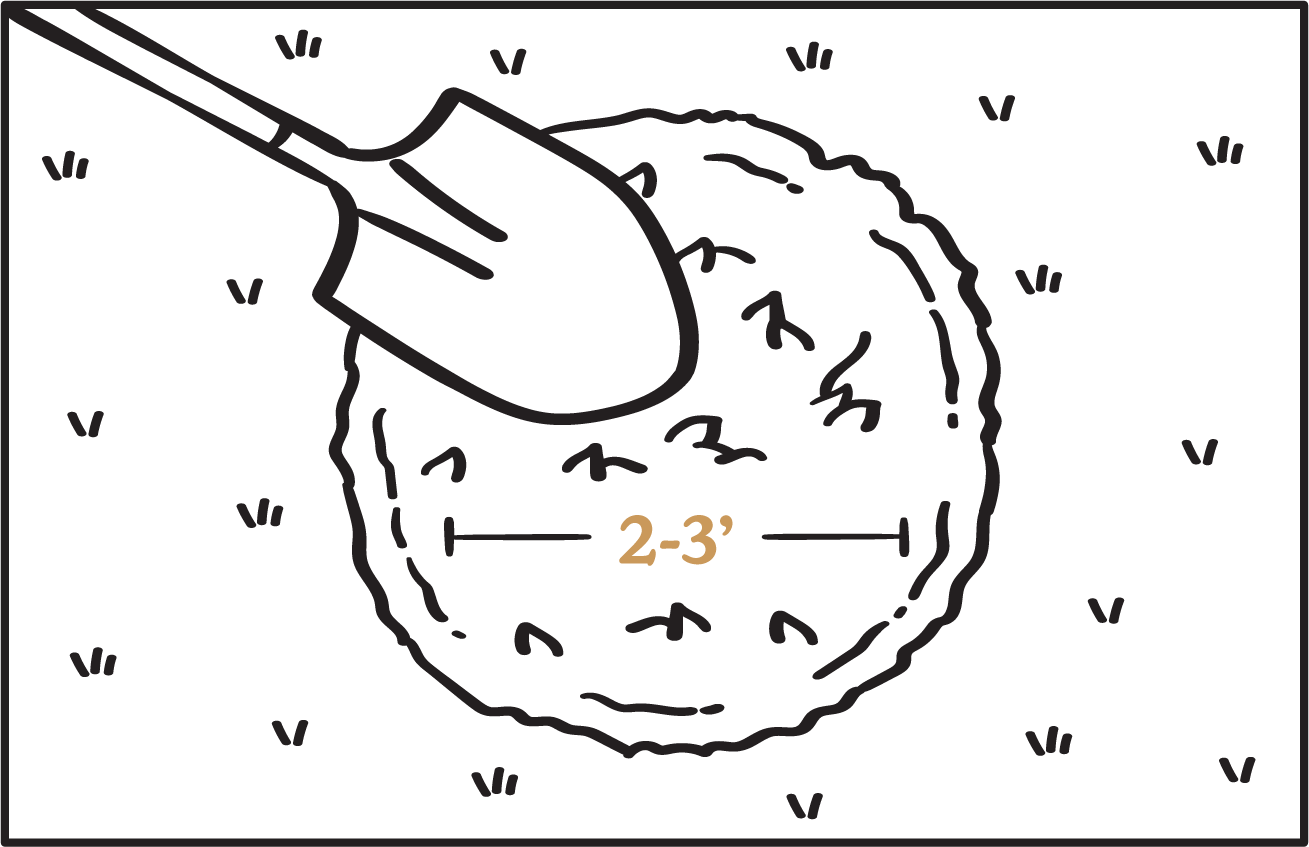
Once you’ve selected your spot, it’s time to ready it for planting. Grass and weeds can compete with your tree for water and nutrients, so you’ll need to remove them. Clear a 2-3 foot circle of stray weeds or grass.
Step 3: Dig the hole
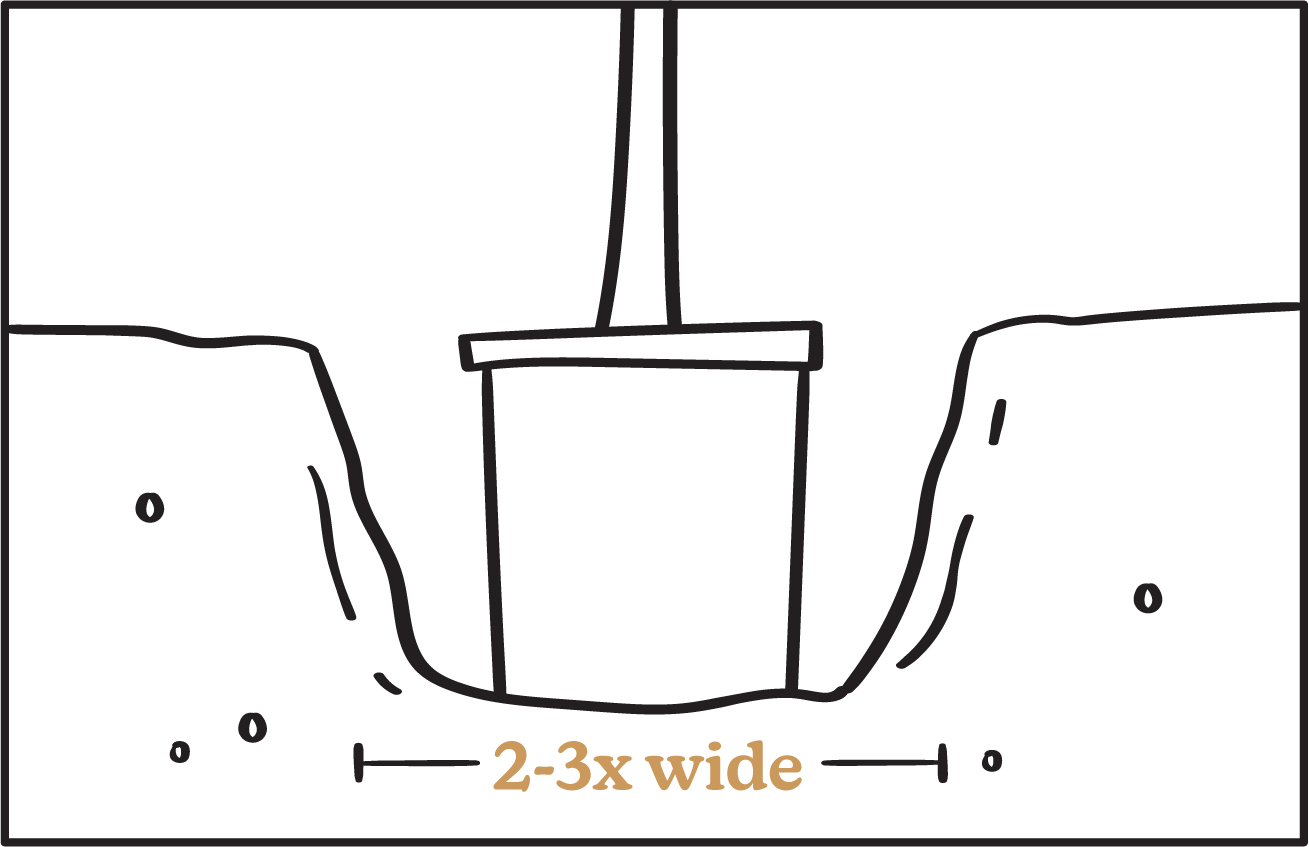
Measure the height of the root ball—or the mass of roots that begins where the trunk meets the soil. Dig a hole as deep as the height of the root ball, and two to three times its width.
Don’t dig deeper than necessary—it’s important to always keep the root crown level with the ground, since planting too deep can cause the trunk to rot!
Step 4: Remove the tree from it’s container
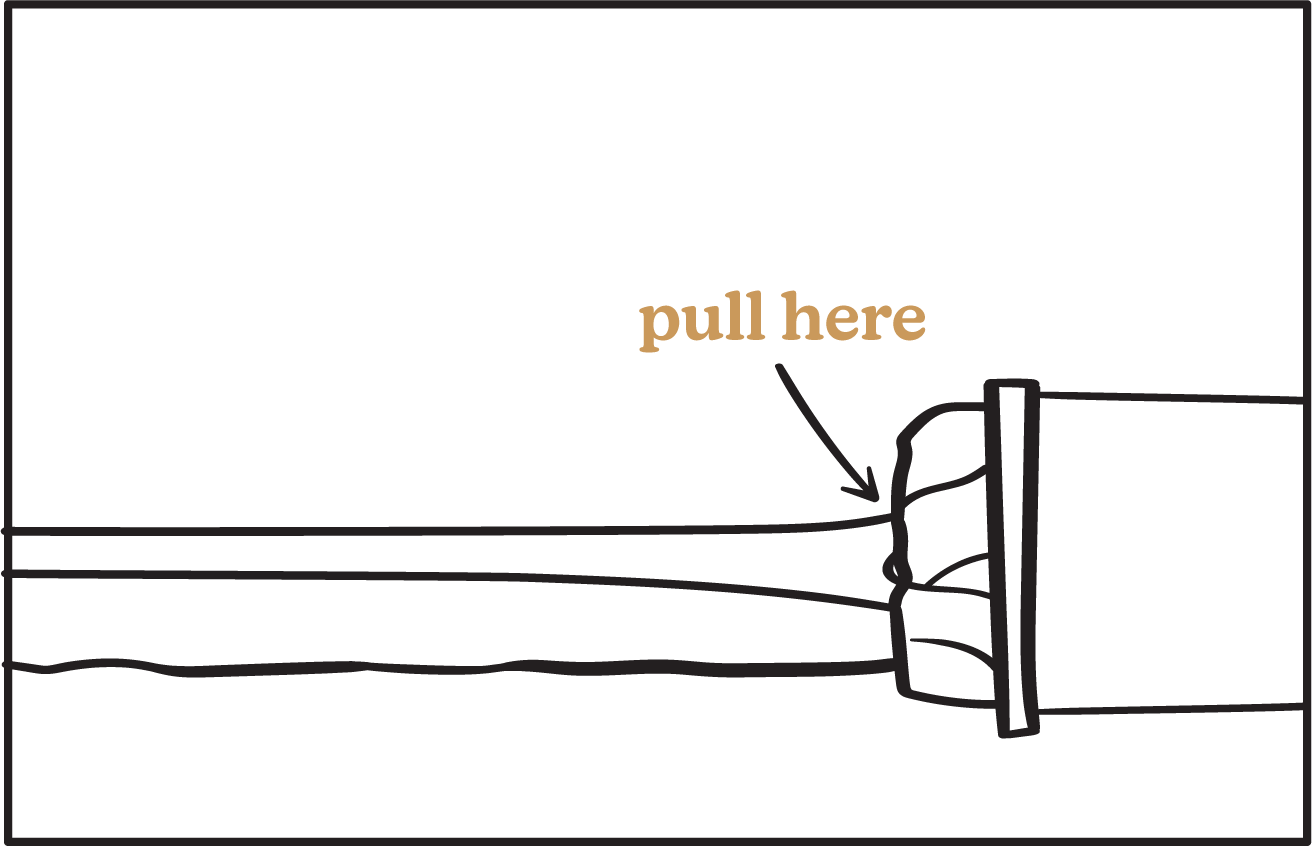
Set the container on the ground, lay the tree on its side, and hit the sides of the container to loosen the root ball. Then, carefully slide the tree out, holding it by the root flare or bottom of the stem—never yank it by the trunk!
Massage the root ball on all sides, including the bottom, so roots are loose and ready to grow out horizontally.
Step 5: Place the tree
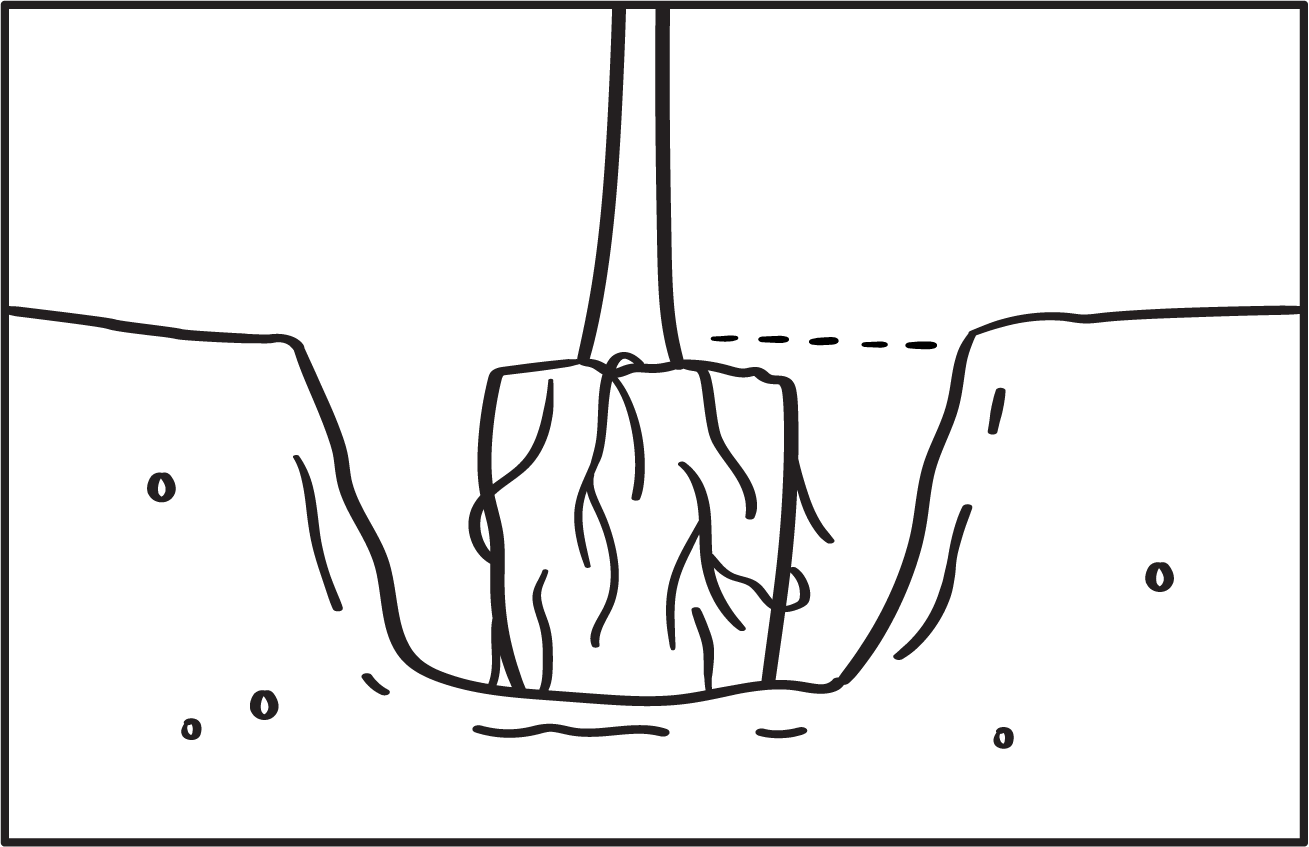
Immediately set the tree in the hole so the top of the root ball lines up exactly with the soil surface. If you leave the root ball exposed to sun and air too long, the roots will dry out.
Turn the tree so that it is oriented and centered. If the tree is standing crooked in the hole, tilt the root ball and add soil underneath so the tree will level out.
Step 6: Backfill around the root ball
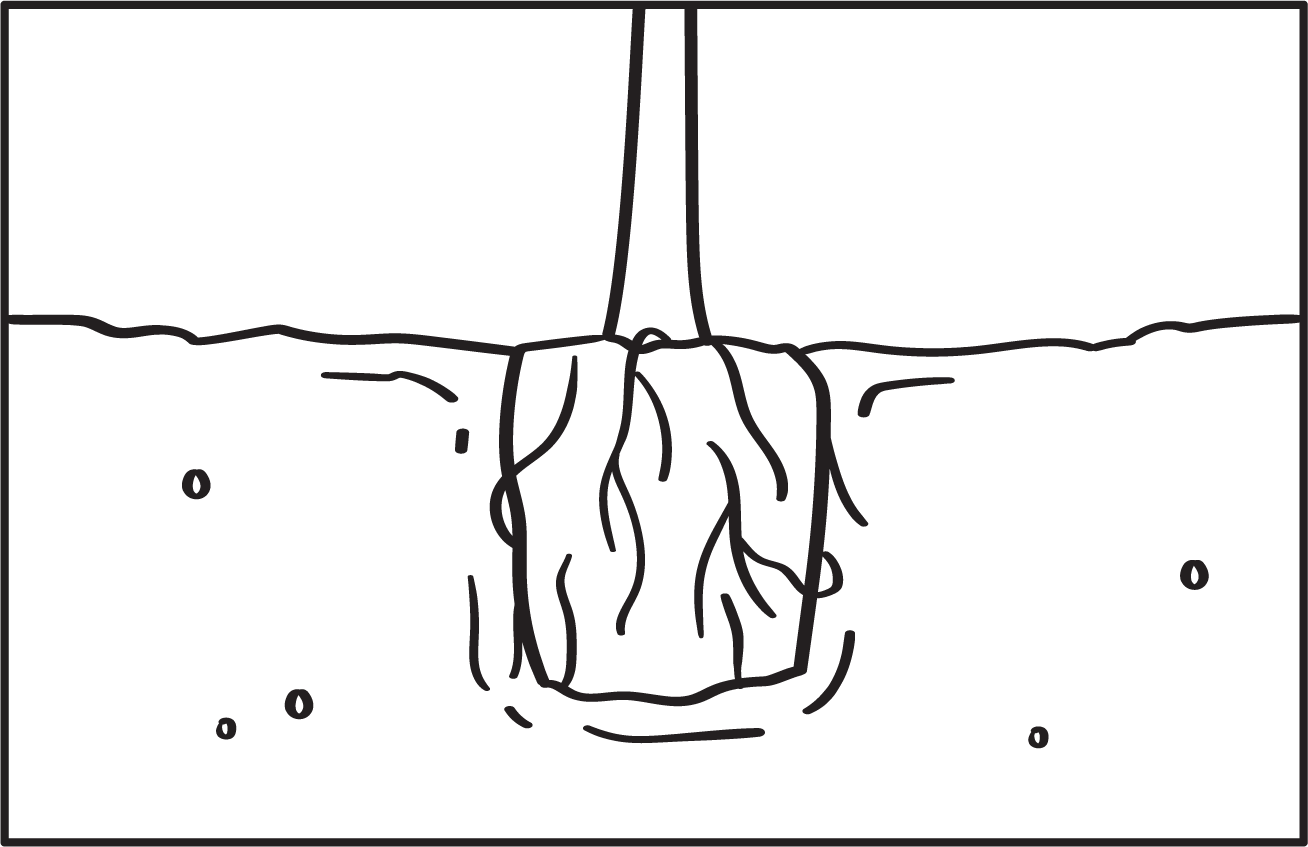
Using the soil you just removed, fill in the empty space around the rootball. Press gently with your hands or the back of a shovel to remove air pockets.
When backfilling is complete, the trunk flare should be at the grade of the soil or 1” above.
Step 7: Build the berm
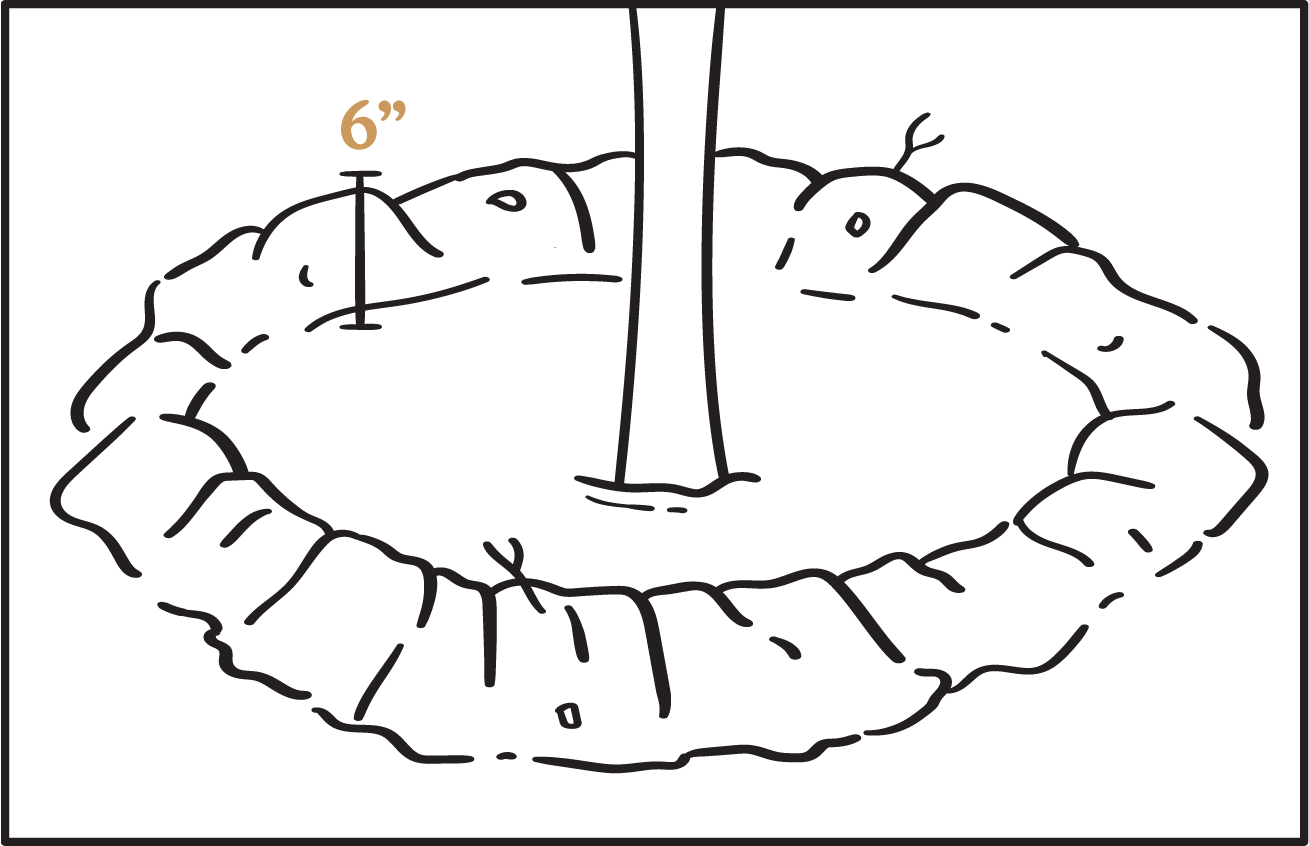
A berm—or a low ring of soil around the tree—helps to capture water and guide it straight to the roots where it’s needed most.
To create one, make a ring of soil about 6 inches high, outside of the root ball’s perimeter.
Step 8: Add the mulch (optional)
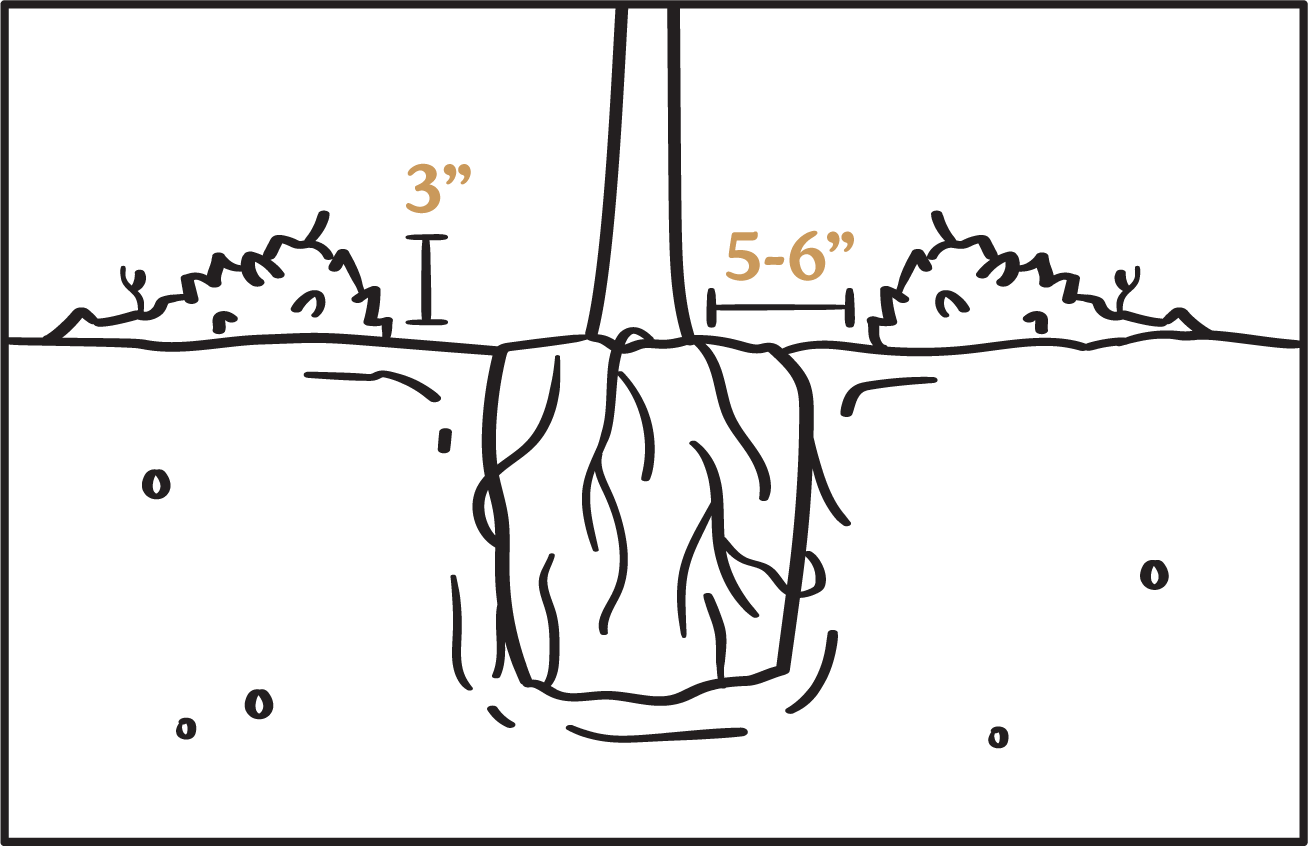
Adding a 3-inch layer of mulch around the tree will help control weeds and prevent evaporation. If you choose to add it, push the mulch 5-6 inches away from the tree’s base, because the trunk will rot if covered.
Step 9: Secure the stakes

Most 5-gallon trees do not require stakes. However, trees that fruit or have heavy “end weight” might benefit from stakes made of flexible materials like bamboo or metal.
To begin, remove any small stakes which may have been tied against the trunk in the nursery container. Take your new stakes and line them up on opposite sides of the tree, outside of the root ball. Ensure the stakes don’t rub on any major branches. If the tree is leaning, position the stakes to tie the tree so that it will stand straight. Then, pound stakes into the ground so they are sturdy, and use flexible ties to secure the tree to the stakes.
Watering Your Tree
It’s key to remember that young and mature trees need different watering. A tree may look healthy, but without adequate water it can become stressed with dry, sparse leaves and dying branches.
Here are a few tips to make sure your tree is getting the most moisture it needs:
Watering Young Trees

How often: About once a week.
How much: About 15-20 gallons of water (three or four 5 gallon buckets) for a 15 gallon tree.
How to do it: Create a 3-4 foot wide basin around the tree to hold the water. Use a bucket to slowly add water into the basin.
Pro Tip: Do not water on the plant (leaves or trunk) in the heat of Summer.
Watering Mature Trees
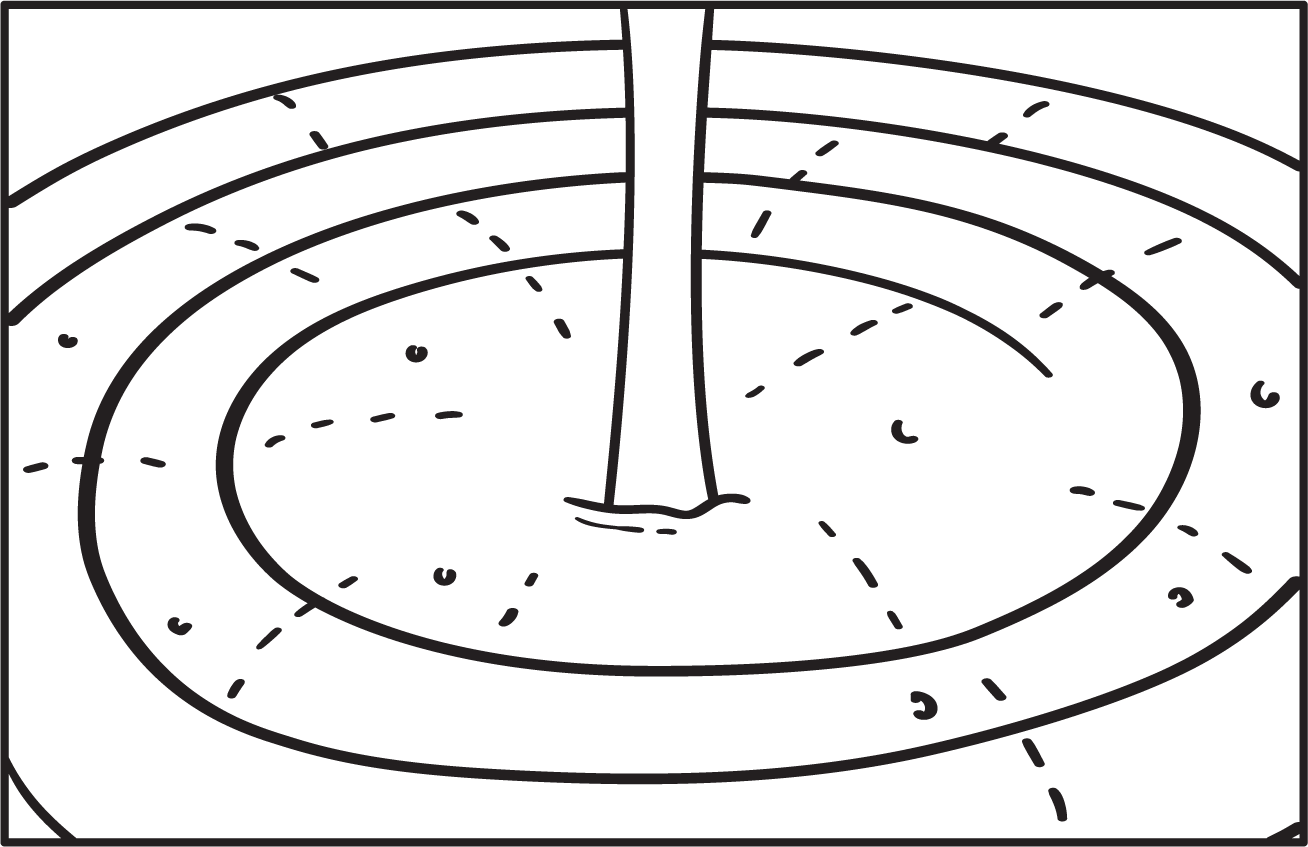
How often: About once or twice a month
How much: Water needs to soak down 12-18 inches. Measure moisture depth with a soil probe/sampler, or simply shove a long-blade screwdriver in the soil. When it won’t go further, you’ve likely hit the dry layer.
How to Do It: Make sure you water slowly with a bucket or a hose, so the water can sink down into the roots.
Pro Tip: If you can, use an “in-line emitter hose” found at home improvement stores. Start about halfway from the trunk. Spiral it outward, forming concentric circles out beyond the drip line. Consult the store specialist for how to connect the hose to your water source. Run it until the water depth is 12-18 inches (this could take one or more hours).
How to Plant Your Tree in a Pot
Step 1: Use a good pot
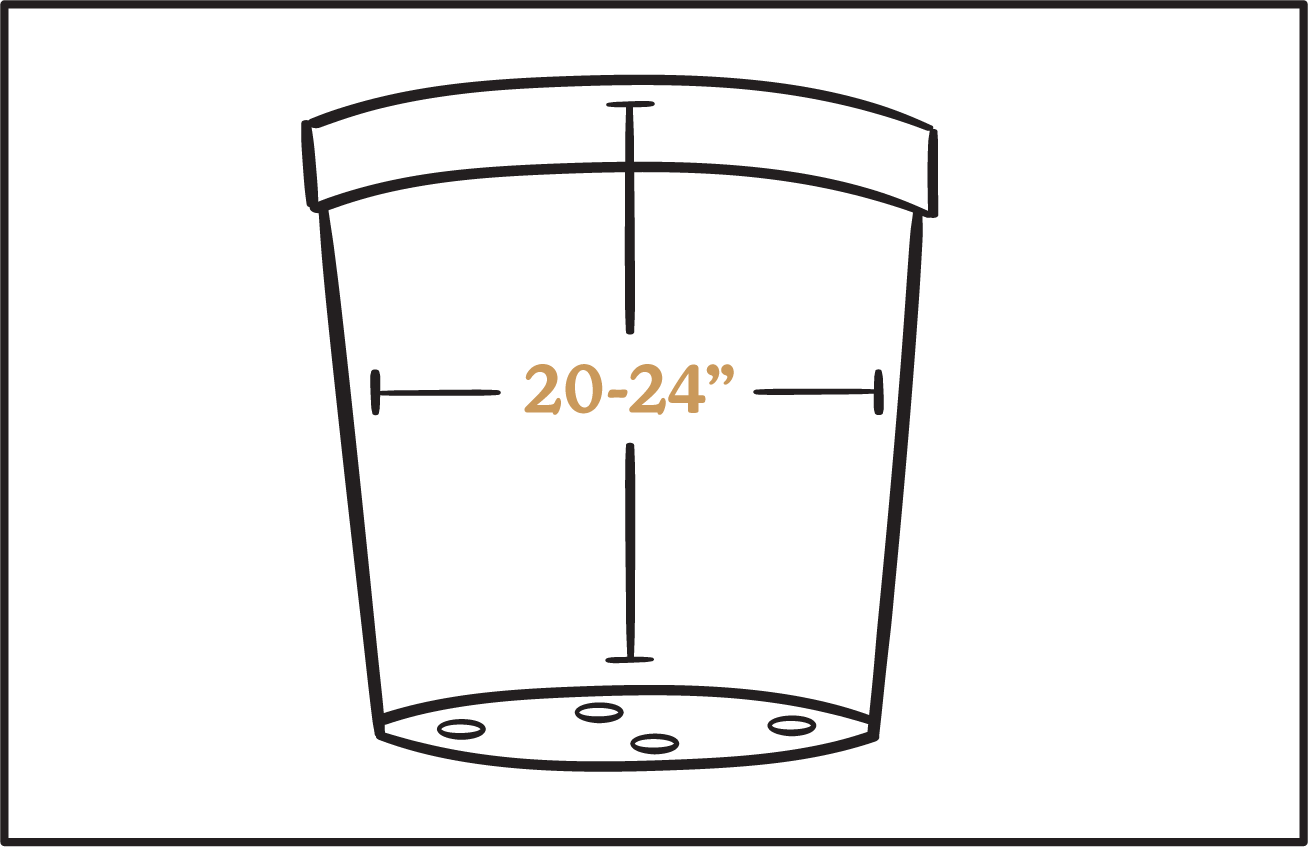
Choose a pot that’s 20–24 inches tall and wide. 15-gallon pots work too—but expect smaller trees.
Make sure the pot has drainage holes—or drill 4 holes at the bottom.
We recommend ceramic pots versus plastic, as ceramic (including terracotta) will help prevent root rot because it is porous.
Step 2: Choose the right potting soil
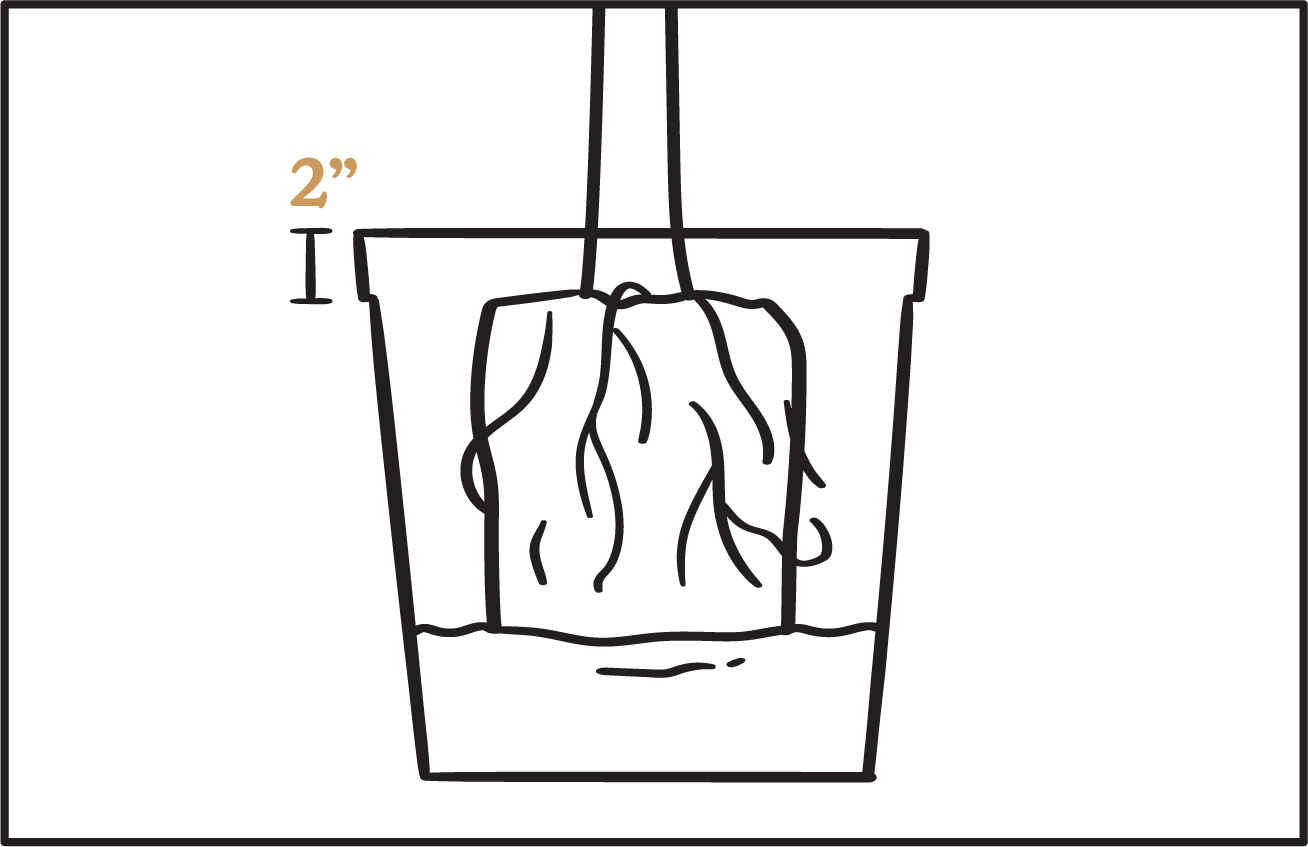
Use nursery-grade potting mix, not garden soil.
Start to fill the pot with soil so the rootball will sit 2 inches below the rim.
Please do not put gravel at the bottom of your pot, as it will impede proper drainage.
We recommend placing mulch on top of the soil, as it helps with water retention.
Step 3: Place your tree and stakes
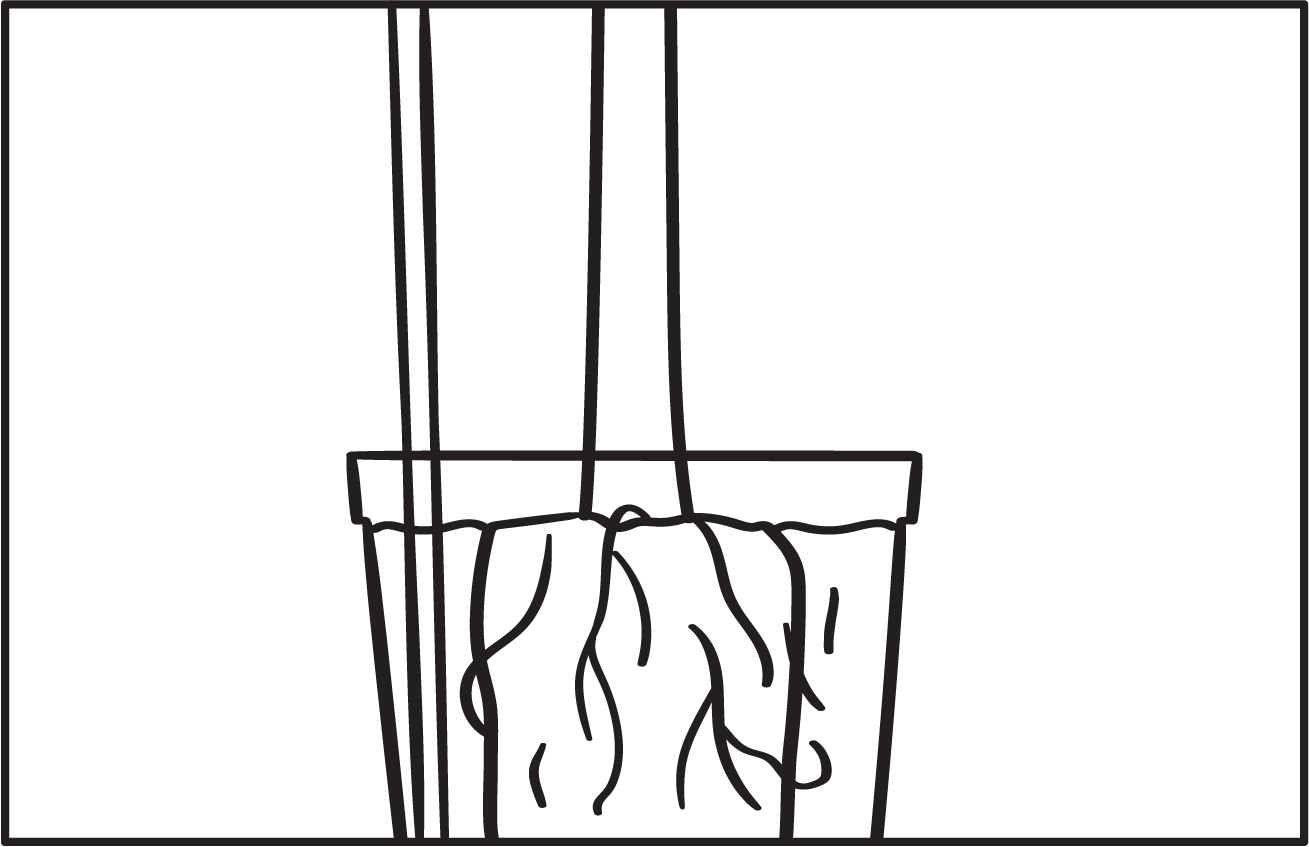
Gently place the tree and cover the roots completely with soil. Add 1–2 stakes if the tree is tall or unstable.
Step 4: Watering potted trees
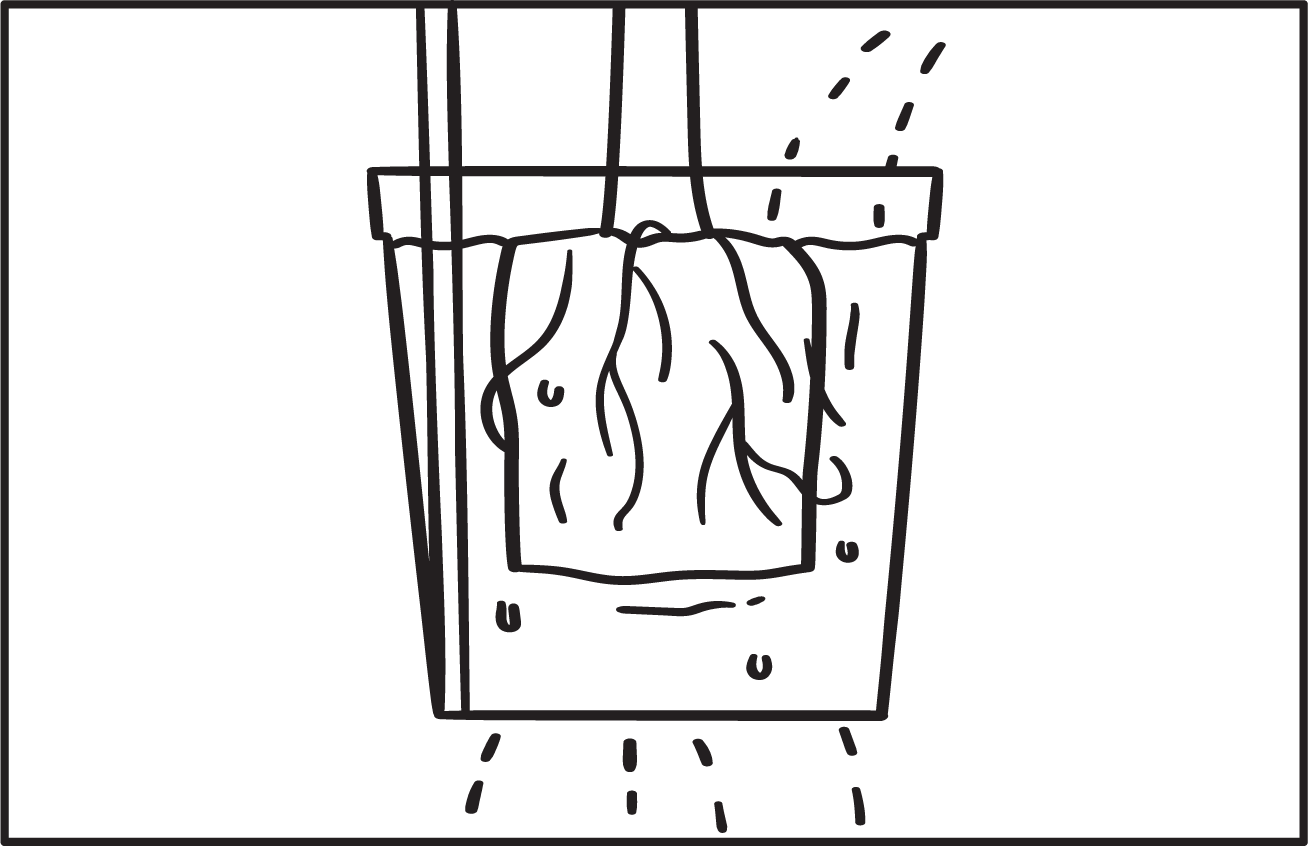
Potted trees dry out faster—keep an eye on soil moisture and water when the top 1–2 inches feel dry.
Water with 4-5 gallons or until water drains out the bottom. The goal is to get the soil thoroughly saturated with water.
Try not to leave standing water in your plant saucer/drip tray, as it more likely to cause root rot.
Ongoing Tree Care
Watering
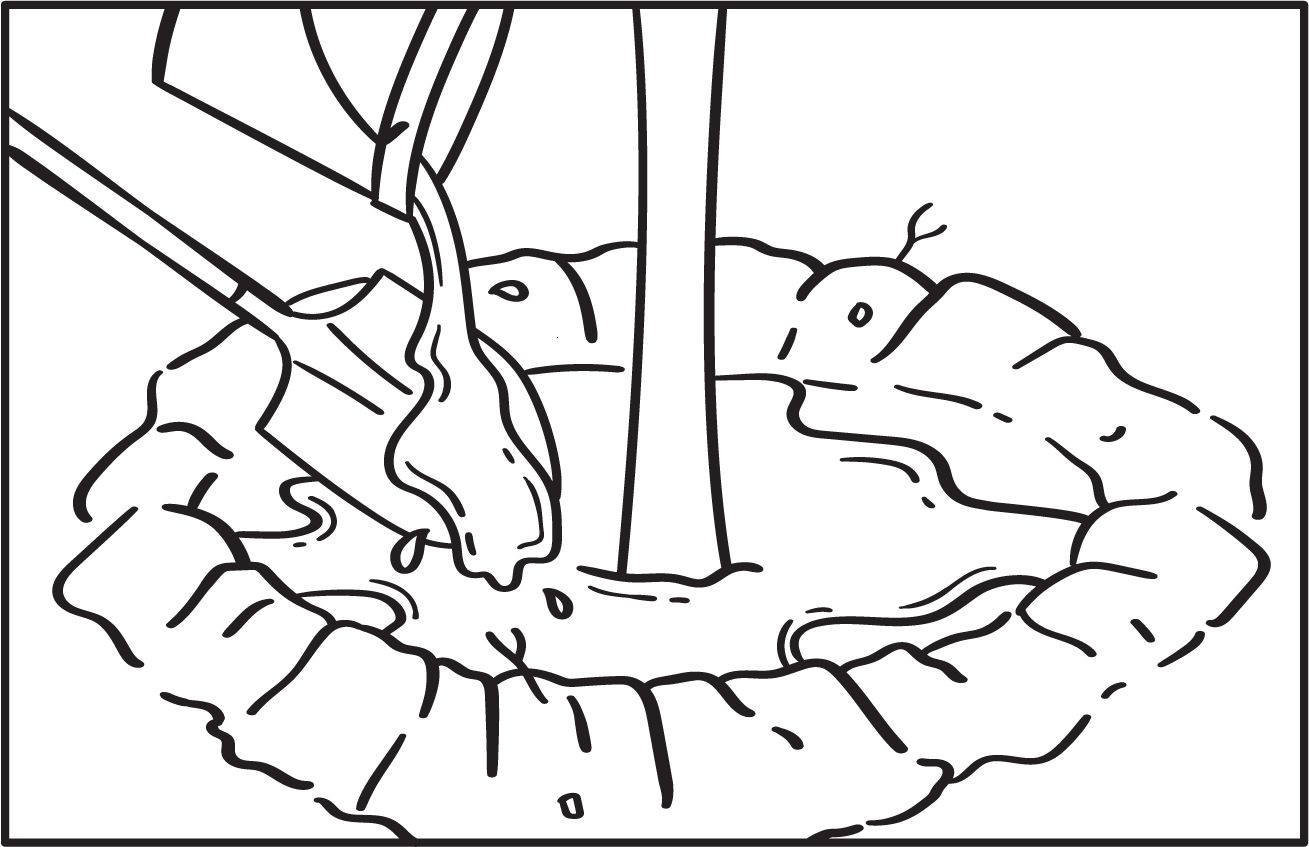
- Water when top soil dries out (1–2 inches for pots, 3–4 inches for ground).
- Deep water twice a week during the first summer for young trees.
Mulching
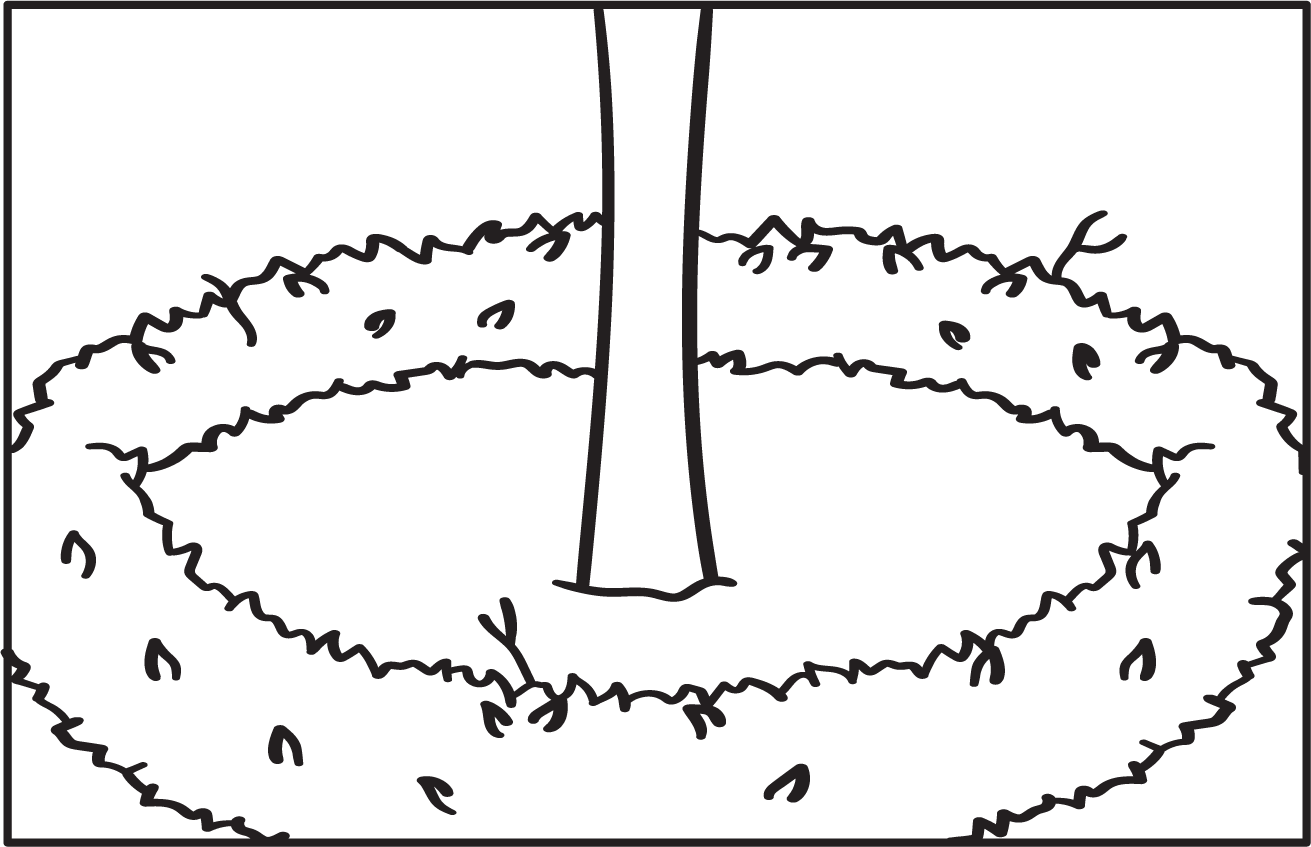
- Clear out any grass or weeds before mulching—they compete for water and nutrients.
- Add 2–4 inches of mulch around the base—keep it off the trunk to prevent rot (about a fist away).
- Mulch helps retain moisture and keeps new weeds from growing.
Fertilizing
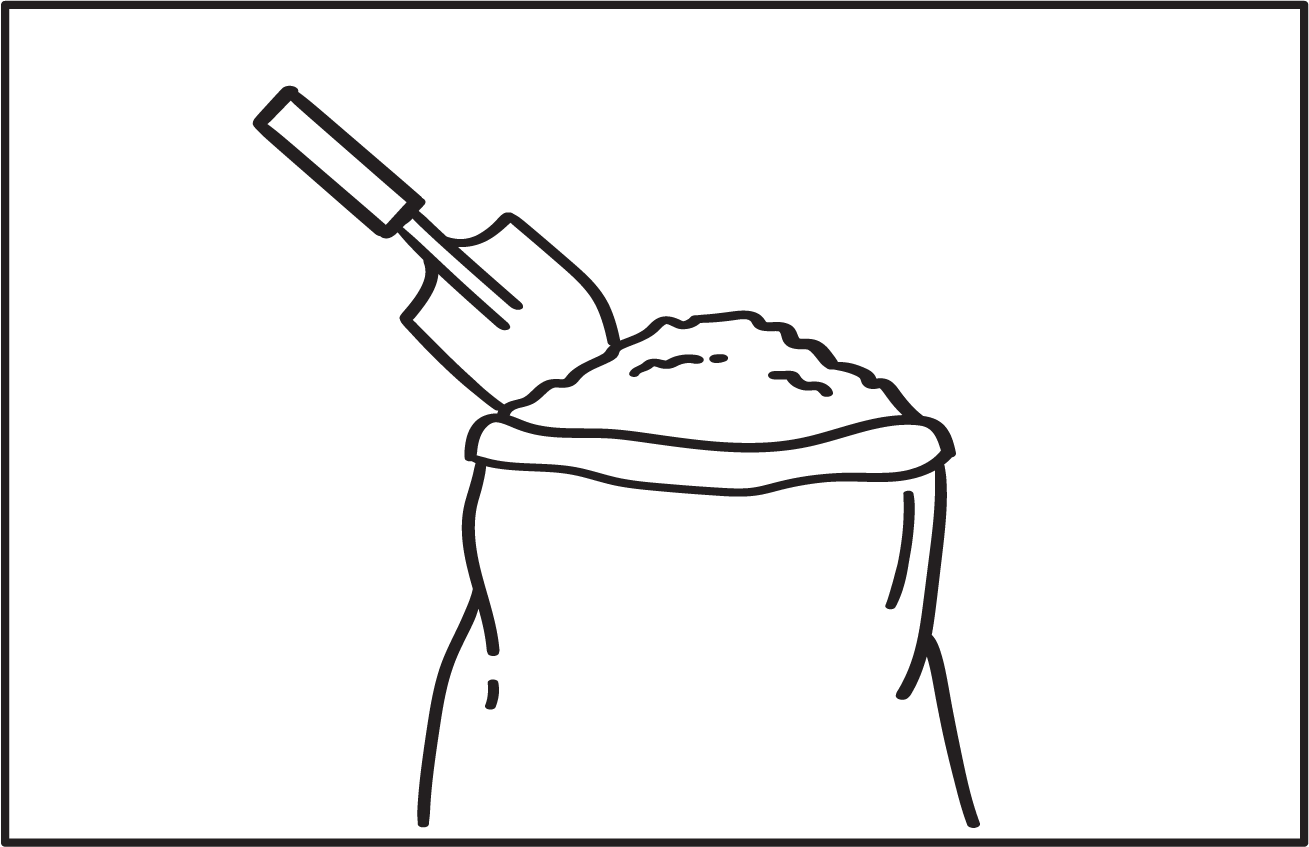
- Use compost or organic fertilizer in late winter or early spring.
- Skip fertilizing in late fall—let it rest.
Pruning
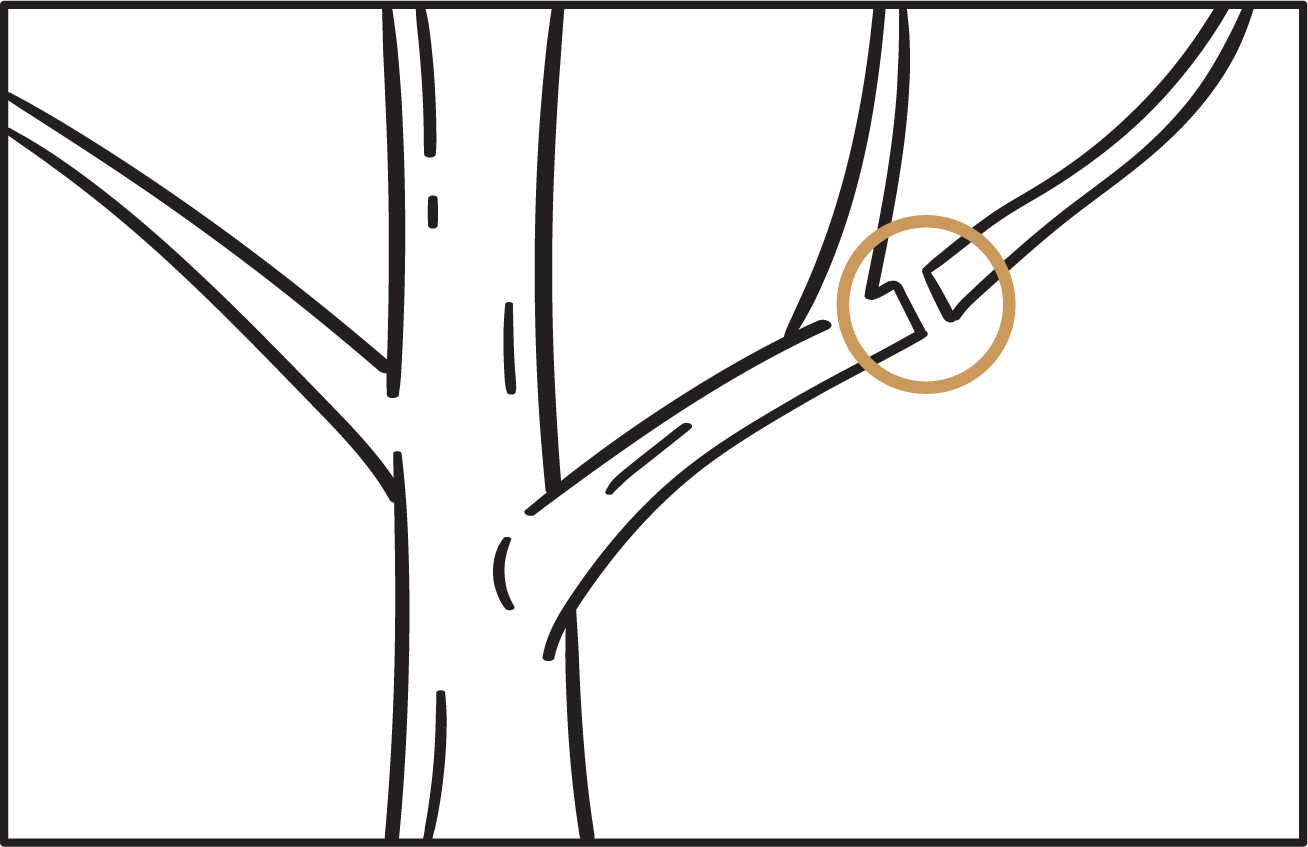
- Remove dead, damaged, diseased, or crossing branches.
- Prune just above outward-facing buds after the first year.
- To learn more about proper tree pruning, read our Pruning 101.
Massaging the root ball (for potted trees)
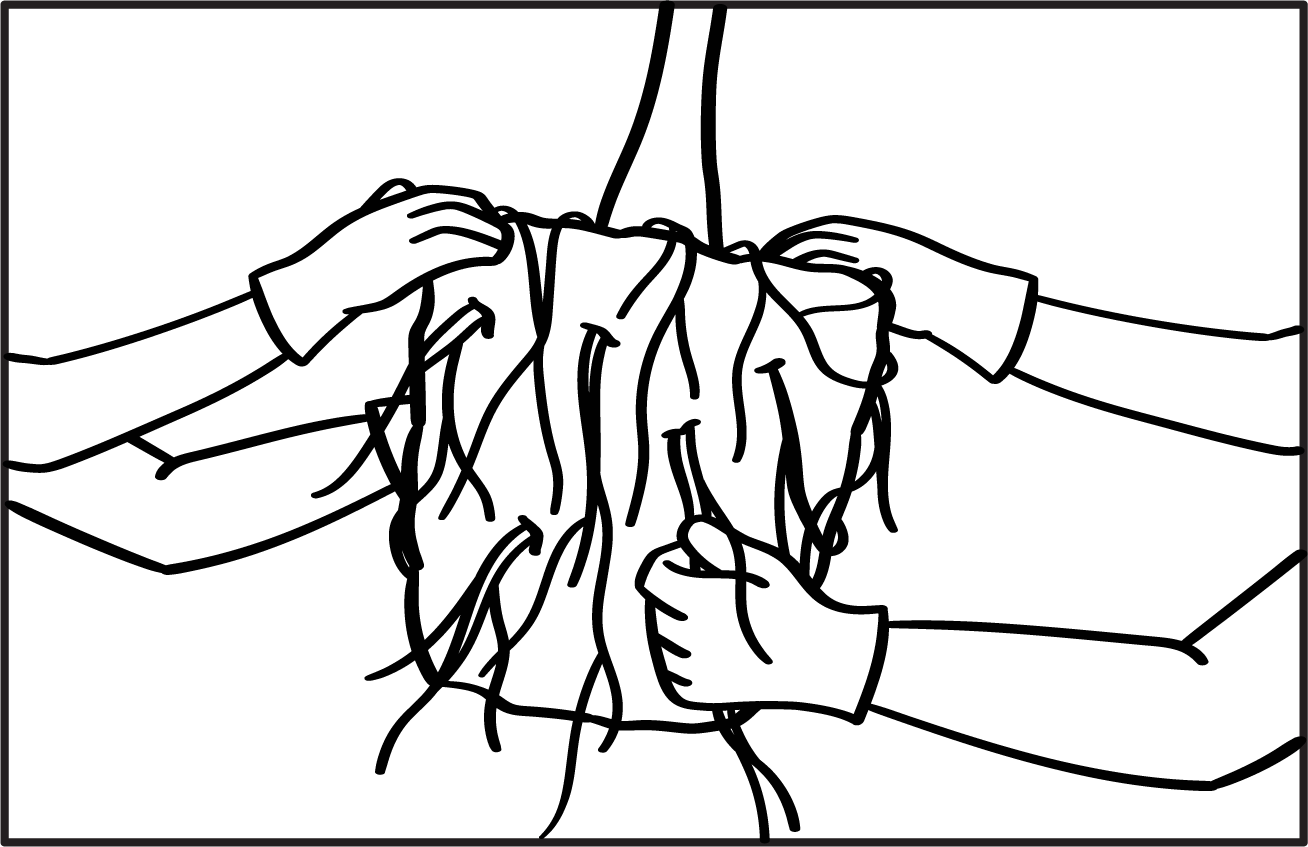
- Every 2–3 years, slide out the tree and trim the outer 1/3 of the rootball.
- Re-pot with fresh soil and water well.
Frequently Asked Questions
I can't plant my tree in the ground. Can I grow it in a pot?
Yes, however, you should adopt a dwarf or semi dwarf varietal.
How long will it take for my tree to bear fruit?
It depends on the varietal. 1-2 years for most citrus trees, and up to 5-10 years for apples and cherries.
How far away from my house should I plant my tree?
For fruit trees, we recommend at least 15-20 feet away from your home.
Will my fruit/shade tree negatively impact the infrastructure below my home?
The risk depends on the tree species, its proximity to infrastructure, and the condition of the underground systems.
Where can I get information on how to care for my fruit/shade tree?
You can visit https://selectree.calpoly.edu and find tons of information on full-spectrum tree care.
How do I find out about future Tree Distributions?
You can always check our volunteer calendar on our website! It's always up to date and is an excellent resource for finding out about our other events. https://treepeople.org/volunteer/
Following us on social media is also a great way to stay up-to-date about distributions in your community: @treepeople_org.
Join Our Newsletter
Stay up to date with TreePeople’s newsletter. Find out about upcoming events, announcements, jobs, and other opportunities to get involved!
By submitting, you are agreeing to receive TreePeople related news and occasional communications, and agreeing to our Privacy Policy.

